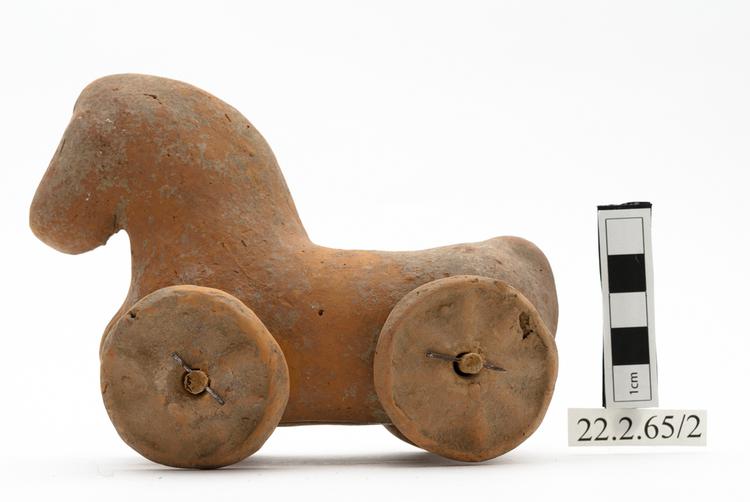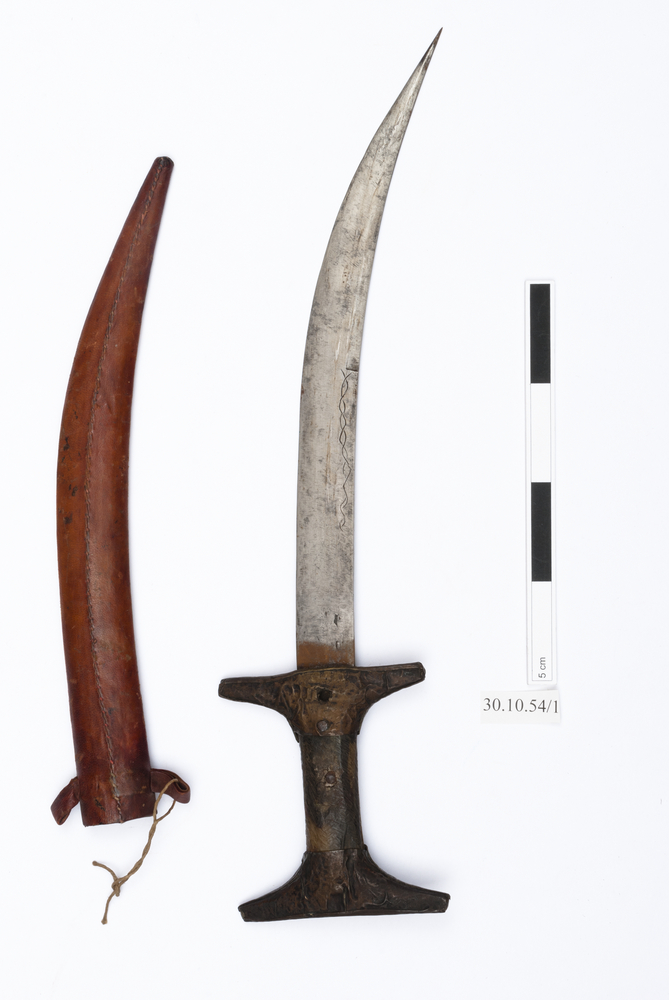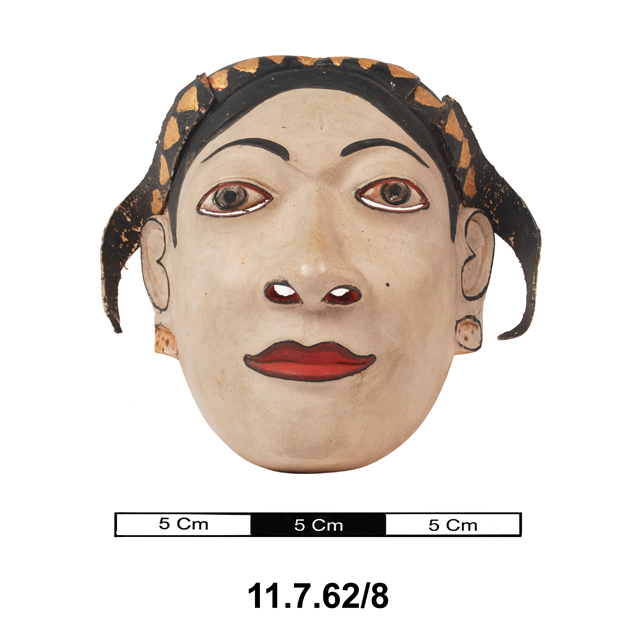


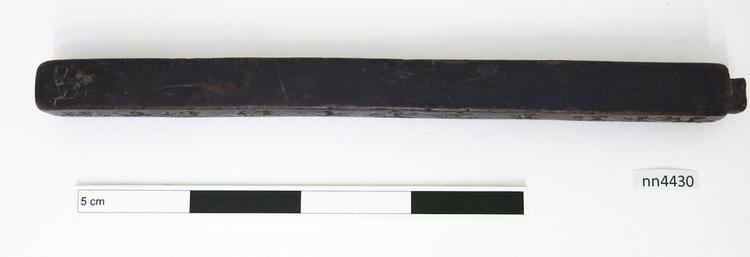
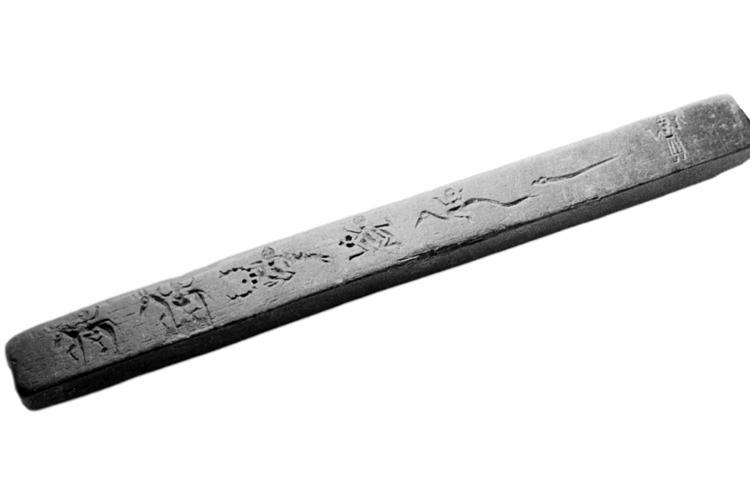
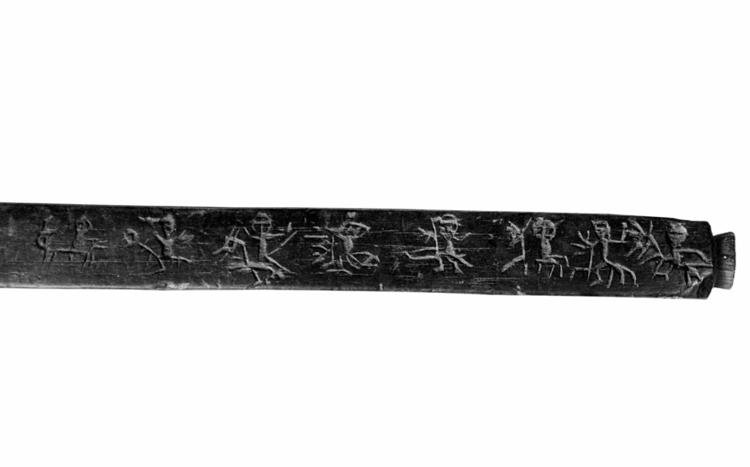

Long rectangular wooden mould for making dough figures or 'zan par'. Carved with figures of deities, spirits and animals.
This object is a mould or zan par used to produce small effigies in dough made from barley flour (rtsam pa). In Tibetan Buddhism zan par effigies are given as offerings to propitiate evil spirits or to please deities. The origins of zan par lie in the religious practices followed in Tibet before the conversion of the region to Buddhism (in the eighth century CE). The pre Buddhist faith demanded sacrifices to appease the spirit world. The sacrificial animal (or in some cases human) would act as a scapegoat (glud) or offering to the deities. Living sacrifices are contrary to Buddhist teachings so zan par effigies represent an adaptation of the pre Buddhist idea of the glud to Buddhist mores. As is the case for many ritual objects in Tibetan Buddhism the way in which zan par effigies are made is very important. Producing zan par effigies is understood to be a devotional act, and therefore requires right motivation and spiritual preparation. During manufacture the appropriate prayers are recited. Often, in order to prevent contamination the monk or craftsman creating the effigies wears a mask over his mouth. The zan par mould itself is coated with butter and rtsam pa dough is then pressed into the mould to create the miniature images. The flour is consecrated before use, auspicious ingredients often being added to please the deity being propitiated (sweet substances for peaceful deities, spicier ingredients for wrathful ones). Zan par effigies are often given as offerings in the hope of overcoming obstacles. These obstacles could be metaphysical issues such as obstructions in the path to enlightenment or economic challenges such as crop failure.



